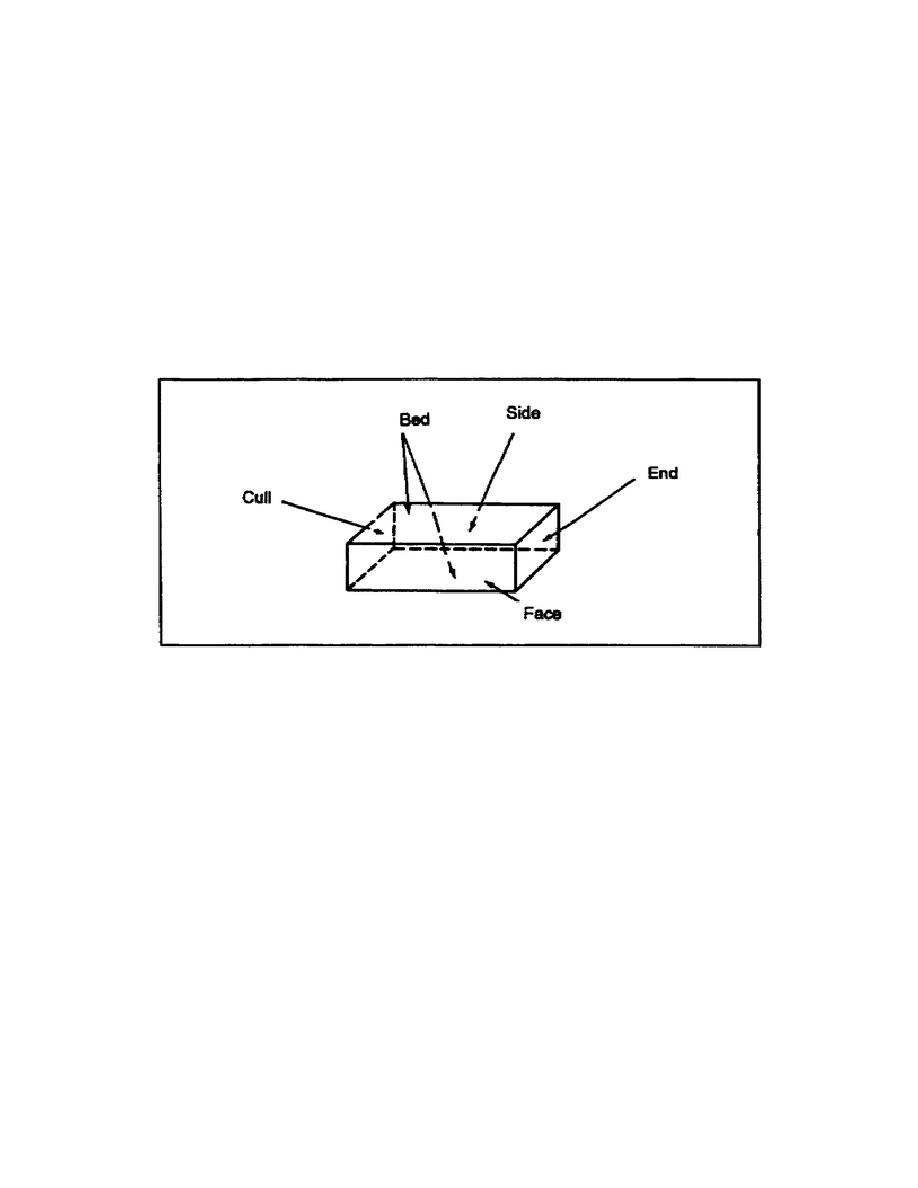
PART A - TYPES AND CHARACTERISTICS OF BRICKS
A brick is a structural unit made from various kiln-baked clay and shale mixtures. Bricks are produced
in a variety of colors and hardness by varying the clay/shale mixtures and the kiln temperature. They
can be solid, hollow, or architectural terra cotta. Individual bricks may serve a structural function, a
decorative function, or both.
3-1. Sizes. The standard-size brick manufactured in the US is 2 1/4 by 3 3/4 by 8 inches. Other brick
types include the English (3 by 4 1/2 by 9 inches), the Roman (1 1/2 by 4 by 12 inches), and the Norman
(2 3/4 by 4 by 2 inches).
3-2. Surfaces. The surface areas of a brick are the face, the cull, the side, the end, and the beds (Figure
3-1).
Figure 3-1. Surface area of a brick
3-3. Types of Bricks. Brick are used in various ways.
a. Building Bricks. Also called common, hard, or kiln-run bricks, these brick are made from
ordinary clays or shales and fired in kilns. They have no special scorings, markings, surface texture, or
color. Building bricks are generally used for the backing courses in solid and cavity brick walls.
b. Face Bricks. Face bricks are used in the exposed face of a wall. They are high quality, durable
bricks with a nice appearance.
c. Clinker Bricks. Clinker brick are bricks that are over-burned in the kiln. They are usually hard,
durable, and irregular in shape.
d. Pressed Bricks. The dry-press process is used rather than kiln firing to make pressed bricks,
which have regular smooth faces, sharp edges, and perfectly square corners. Pressed bricks are
generally used as face bricks.
3-2
EN5157



 Previous Page
Previous Page
